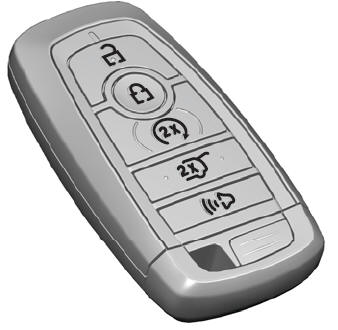Lincoln Aviator 2020-2025 Service Manual / Powertrain / Automatic Transmission / Automatic Transmission - 10-Speed Automatic Transmission – 10R60 / General Procedures - Adaptive Learning Drive Cycle
Lincoln Aviator: Automatic Transmission - 10-Speed Automatic Transmission – 10R60 / General Procedures - Adaptive Learning Drive Cycle
Programming
NOTE: Perform the adaptive learning drive cycle on a level road surface.
-
Using the scan tool, clear the DTCs (Diagnostic Trouble Codes) and Transmission Adaptive Tables.
-
Drive the vehicle until the engine and transmission reach normal operating temperature.
-
Accelerate from a stop with light throttle (15%)
ensuring that upshifts 1st through 8th occur at engine speeds between
1300-1600 rpm.
-
Continue to accelerate (may apply slightly more throttle
after 7-8 upshift at 32-38 mph (51-61 km/h) until you achieve 55 mph
(88 km/h) and the 8-9 and 9-10 shifts complete.
-
Brake very gently to a complete stop and hold foot on brake for five (5) seconds.
-
Shift the transmission to Neutral. Wait 1 second.
-
Shift the transmission to Reverse. Wait 2 seconds.
-
Shift the transmission to Neutral. Wait 1 second.
-
Shift the transmission to Drive. Wait 2 seconds.
-
Repeat Steps 3 through 9 six additional times.
 Diagnosis and Testing - Torque Converter Clutch (TCC)
Diagnosis and Testing - Torque Converter Clutch (TCC)
Symptom Chart
Torque Converter Clutch (TCC)
For torque converter operation, REFER to: Torque Converter (307-01A Automatic Transmission - 10-Speed Automatic Transmission – 10R60, Description and Operation)...
 General Procedures - Transmission Fluid Drain and Refill
General Procedures - Transmission Fluid Drain and Refill
Special Tool(s) /
General Equipment
307-570Tube, Transmission FillTKIT-2006U-F/FMTKIT-2006U-FLM/LMTKIT-2006U-ROW1TKIT-2006U-ROW2
Fluid Suction Gun
Materials
Name
Specification
Motorcraft® MERCON® ULV Automatic Transmission FluidXT-12-QULV
WSS-M2C949-A, MERCON® ULV
Draining
NOTE:
It is not necessary to remove the transmission fluid filter to drain the transmission fluid...
Other information:
Lincoln Aviator 2020-2025 Owners Manual: Lincoln Protect
PROTECT YOURSELF FROM THE RISING COST OF VEHICLE REPAIRS WITH LINCOLN PROTECT EXTENDED SERVICE PLAN. Lincoln Protect Extended Service Plans (U.S. Only) Lincoln Protect means peace of mind. It’s the extended service plan backed by the Lincoln Motor Company, and provides more protection beyond the New Vehicle Limited Warranty coverage...
Lincoln Aviator 2020-2025 Service Manual: Removal and Installation - Front Bumper
Special Tool(s) / General Equipment Interior Trim Remover Removal Remove the front bumper cover. Refer to: Front Bumper Cover (501-19 Bumpers, Removal and Installation). Release the tabs and remove the front bumper energy absorber...
Categories
- Manuals Home
- Lincoln Aviator Owners Manual
- Lincoln Aviator Service Manual
- Fuel Quality
- Opening and Closing the Hood
- Body and Paint
- New on site
- Most important about car
Remote Control
Passive Key

The passive key operates the power locks and the remote start system. The passive key must be in your vehicle to use the push button start.
Note: You may not be able to shift out of park (P) unless the passive key is inside your vehicle.
Copyright © 2025 www.liaviator2.com
